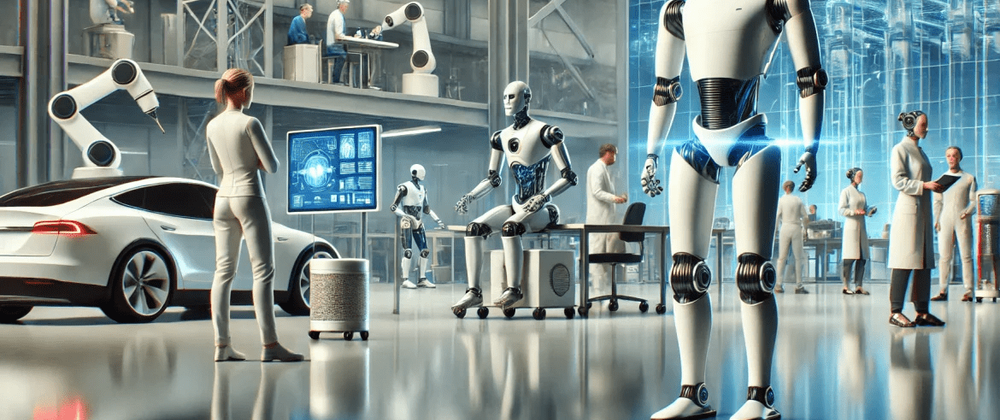Tesla, a name synonymous with innovation in electric vehicles and renewable energy, has once again captured the world’s imagination. This time, it’s not with a new car but with a humanoid robot called Optimus. The Tesla Bot, also known as Optimus, which Elon Musk unveiled in August 2021, promises to revolutionize the way we view automation and robotics. As excitement builds, the burning question on everyone’s mind is: When will Tesla start selling the Optimus?
The Vision Behind Tesla Optimus
Before delving into the release date, it’s important to understand the vision behind Optimus. According to Elon Musk, Tesla Optimus is designed to handle tasks that are dangerous, repetitive, or boring for humans. This aligns with Musk’s broader mission to create technologies that improve the quality of life and drive humanity towards a more sustainable future.
The Tesla Optimus stands at 5 feet 8 inches, weighs 125 pounds, and can carry up to 45 pounds. It is intended to navigate through a human-oriented environment, performing tasks such as grocery shopping, household chores, and even complex jobs in industrial settings. Equipped with advanced artificial intelligence, the robot will be able to learn and adapt, making it a versatile tool in various scenarios.
Development Progress
Since the announcement, Tesla has been tight-lipped about the specifics of the Optimus development timeline. However, several clues have surfaced that provide insight into the project’s progress. During Tesla’s AI Day in August 2021, Musk revealed that a prototype could be expected as early as 2022. This ambitious timeline underscored Tesla’s commitment to accelerating the development of its robotics program.
In 2022, Tesla showcased a prototype of the Optimus robot. The demonstration highlighted its ability to walk, handle objects, and interact with its environment, albeit in a controlled setting. This prototype marked a significant milestone, demonstrating the feasibility of Musk’s vision and the potential for rapid advancements.
Anticipated Release Date
As of mid-2024, Tesla has not provided an official release date for when the Optimus will be available for purchase. However, several factors can help us speculate about a potential timeline.
Prototype Development and Testing: The development of a fully functional prototype is a crucial step. Given that Tesla showcased a prototype in 2022, it’s reasonable to assume that the company has been refining and testing the robot since then. Typically, such advancements can take several years before a product is market-ready.
Regulatory Approvals: For a humanoid robot like Optimus to be sold to the public, it must meet stringent safety and regulatory standards. This process can be lengthy and involves rigorous testing to ensure the robot’s safety and reliability.
Production Scaling: Once the design and testing phases are complete, Tesla will need to scale production. This step includes setting up manufacturing facilities, establishing supply chains, and ensuring quality control. Tesla’s experience with scaling electric vehicle production will be beneficial, but the complexity of producing a humanoid robot cannot be underestimated.
Market Readiness: Tesla will also need to gauge market readiness and demand. The company may initially release Optimus in limited quantities to gather feedback and make necessary adjustments before a full-scale launch.
Considering these factors, a realistic estimate for when Tesla might start selling the Optimus robot could be between 2025 and 2027. This timeline allows for the necessary development, testing, and production processes to be thoroughly completed.
Potential Impact and Applications
The introduction of the Tesla Optimus robot has the potential to revolutionize multiple industries. Here are some key areas where Optimus could make a significant impact:
Manufacturing and Industrial Automation: Optimus could handle repetitive and physically demanding tasks, improving efficiency and safety in factories and warehouses. Its ability to learn and adapt makes it suitable for various applications, from assembly lines to quality control.
Healthcare and Elder Care: In healthcare, Optimus could assist with patient care, medication delivery, and even perform simple medical procedures. Its application in elder care could include companionship, assistance with daily activities, and monitoring health conditions, providing much-needed support to an aging population.
Retail and Customer Service: In retail settings, Optimus could help with inventory management, customer assistance, and checkout processes. Its presence could enhance the shopping experience by providing real-time assistance and maintaining store operations.
Home Automation: For everyday consumers, Optimus could become an integral part of smart homes. It could handle household chores, provide security, and assist with personal tasks, allowing people to focus on more meaningful activities.
Agriculture: In the agricultural sector, Optimus could perform labor-intensive tasks such as planting, harvesting, and monitoring crops. This would alleviate labor shortages and improve productivity in the farming industry.
Challenges Ahead
While the potential of the Tesla Optimus robot is immense, several challenges need to be addressed before it becomes a commercial reality:
Technical Hurdles: Developing a humanoid robot with advanced AI, mobility, and dexterity is a complex task. Ensuring that Optimus can operate safely and effectively in diverse environments is a significant challenge.
Cost: The production cost of such an advanced robot could be high. Making it affordable for a broad range of consumers and businesses will be crucial for widespread adoption.
Ethical and Social Considerations: The introduction of humanoid robots raises ethical and social questions, including job displacement, privacy concerns, and the potential for misuse. Addressing these issues will be important for gaining public acceptance.
Regulation and Liability: Establishing regulatory frameworks and liability standards for humanoid robots will be necessary to ensure safety and accountability.
Conclusion
The Tesla Optimus robot represents a bold step into the future of robotics and automation. While the exact release date remains uncertain, it is clear that Tesla is making significant strides in developing this groundbreaking technology. With potential applications across various industries and the promise of improving everyday life, the anticipation surrounding Optimus continues to grow. As we look forward to seeing Tesla’s vision come to fruition, it’s safe to say that the world will be watching closely for the day when Optimus finally hits the market.






Latest comments (0)